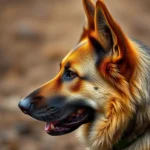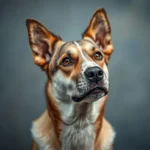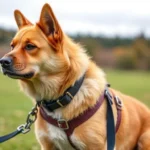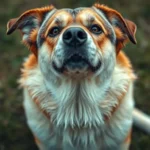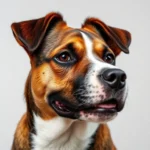
Understanding why dogs twitch in sleep can provide valuable insights into their overall health and well-being. Observing our furry friends as they doze off can be both amusing and puzzling, especially when they start to tremble, kick, or make little whimpering sounds. These behaviors can leave dog owners questioning what’s happening in their canine’s mind.
In this article, we will delve into the various aspects of canine sleep behavior, explore the reasons behind twitching during sleep, and discuss how to ensure your dog gets quality rest.
Understanding Dog Sleep Cycles
Stages of Sleep in Dogs
Dogs, like humans, experience different stages of sleep. The most notable stage is REM (Rapid Eye Movement) sleep, during which dreaming occurs. During this phase, a dog’s brain is highly active, and their body may twitch as they engage in dreams.
The non-REM sleep stages consist of light sleep and deep sleep. In light sleep, dogs may be easily awakened and may not show much twitching. However, in deep sleep, their body becomes more relaxed, and they are less responsive to external stimuli.
How Dog Sleep Differs from Human Sleep
While humans typically go through sleep cycles of 90 minutes, dogs have shorter cycles, averaging around 20 minutes. This means that dogs can enter REM sleep more frequently throughout the night. Additionally, dogs tend to sleep more hours per day compared to humans, averaging 12-14 hours, depending on their age and activity level.
Understanding these differences helps explain why dogs twitch in sleep more often than we might expect.
Common Reasons Dogs Twitch in Their Sleep
Dreaming
One of the most common reasons dogs twitch in their sleep is that they are dreaming. Just like humans, dogs experience dreams, and their twitching may be a reflection of the dream content.
Signs that indicate a dog is dreaming include:
– Rapid eye movement behind closed eyelids
– Twitching of paws or facial muscles
– Soft vocalizations, such as whimpering or growling
Muscle Relaxation and Spasms
As dogs transition into the deeper stages of sleep, their muscles relax. This relaxation can sometimes lead to spontaneous muscle spasms or twitches. These spasms are generally harmless and are part of the body’s natural sleep process.
When a dog is relaxed, their brain sends signals to the muscles to loosen up, which can result in twitching. This phenomenon is similar to what humans experience when we feel our leg jerk suddenly while dozing off.
Neurological Responses
The canine nervous system plays a significant role in sleep behavior. Just like any living creature, dogs have electrical activity in their brains that can manifest during sleep. This neurological activity can lead to twitching or jerking movements.
In essence, the twitching can be viewed as a normal physiological response as the brain processes information and memories during sleep.
Factors Influencing Sleep Behavior
Age and Development
Age plays a crucial role in how dogs sleep and twitch. Puppies tend to have more active sleep patterns, often twitching and moving more frequently as they dream and explore their new world. As dogs mature into adulthood, their sleep patterns stabilize, but they may still twitch during REM sleep.
As dogs age, they may experience changes in their sleep quality and duration. Older dogs might not enter REM sleep as often, which can alter their twitching behaviors.
Breed-Specific Behaviors
Certain breeds are known for exhibiting more pronounced twitching during sleep. For example, breeds like Terriers, Beagles, and Greyhounds may show more noticeable sleep movements due to their higher activity levels and unique genetic predispositions.
Some breeds have a genetic inclination towards more active dreaming, leading to more frequent twitching episodes. Understanding your dog’s breed characteristics can give you insight into their sleep behaviors.
Health Conditions
While occasional twitching is normal, certain health conditions can influence sleep behavior. Issues such as seizures, muscle disorders, or neurological problems may result in abnormal twitching. If you notice your dog twitching excessively or exhibiting unusual patterns, it’s essential to consult a veterinarian.
Regular veterinary check-ups can help identify any underlying health issues affecting your dog’s sleep and twitching patterns.
When to Worry About Twitching
Normal vs. Abnormal Twitching
Not all twitching is cause for concern. Normal twitching typically involves small, rhythmic movements and occurs during REM sleep. In contrast, abnormal twitching may include:
– Intense, uncontrollable shaking
– Signs of distress or pain
– Lasting longer than a few seconds
If you observe these signs, it may indicate an underlying problem, and it’s wise to consult your veterinarian for further evaluation.
Monitoring Your Dog’s Sleep Patterns
Keeping track of your dog’s sleep behavior can provide valuable insights. Here are some tips for observing sleep behavior:
– Keep a journal: Note when your dog sleeps, how long they sleep, and any unusual behaviors.
– Watch for patterns: Look for consistency in their twitching and overall sleep quality.
– Take videos: Recording your dog’s sleep can help capture any unusual twitching for vet visits.
Monitoring these aspects can help you determine whether your dog’s twitching is normal or if further investigation is necessary.
Tips for Ensuring Quality Sleep for Your Dog
Creating a Comfortable Sleep Environment
A comfortable sleeping environment is crucial for your dog’s rest. Here are some best practices:
– Choose the right bedding: Invest in a comfortable dog bed that provides support and warmth.
– Control noise levels: Make sure the sleeping area is quiet and free from sudden disturbances.
– Optimize lighting: A dark and calm space promotes better sleep for your dog.
Establishing a Routine
Dogs thrive on routine, and establishing a consistent sleep schedule can help improve their sleep quality. Here’s how:
– Set regular sleep times: Try to put your dog to bed at the same time each night.
– Create a pre-sleep ritual: Engage in calming activities before bedtime, such as gentle petting or light play.
Regular Health Check-ups
Regular visits to the veterinarian are essential for monitoring your dog’s health and sleep behavior. Discuss any concerns regarding twitching during these appointments. Your vet can provide guidance on maintaining your dog’s overall well-being and addressing any sleep-related issues.
Conclusion
Understanding why dogs twitch in sleep can help demystify this common behavior. Twitching during sleep is often a normal part of the sleep cycle, especially during REM sleep when dreaming occurs. However, it’s essential to differentiate between normal and abnormal twitching, keeping an eye on your dog’s overall health.
By providing a comfortable sleep environment, establishing a routine, and ensuring regular veterinary check-ups, you can help your dog enjoy restful sleep and reduce any potential concerns.
As you observe your furry friend’s sleep habits, take comfort in knowing that twitching is often just a part of their dream-filled nights. If you have any experiences or questions, feel free to share them in the comments below.
